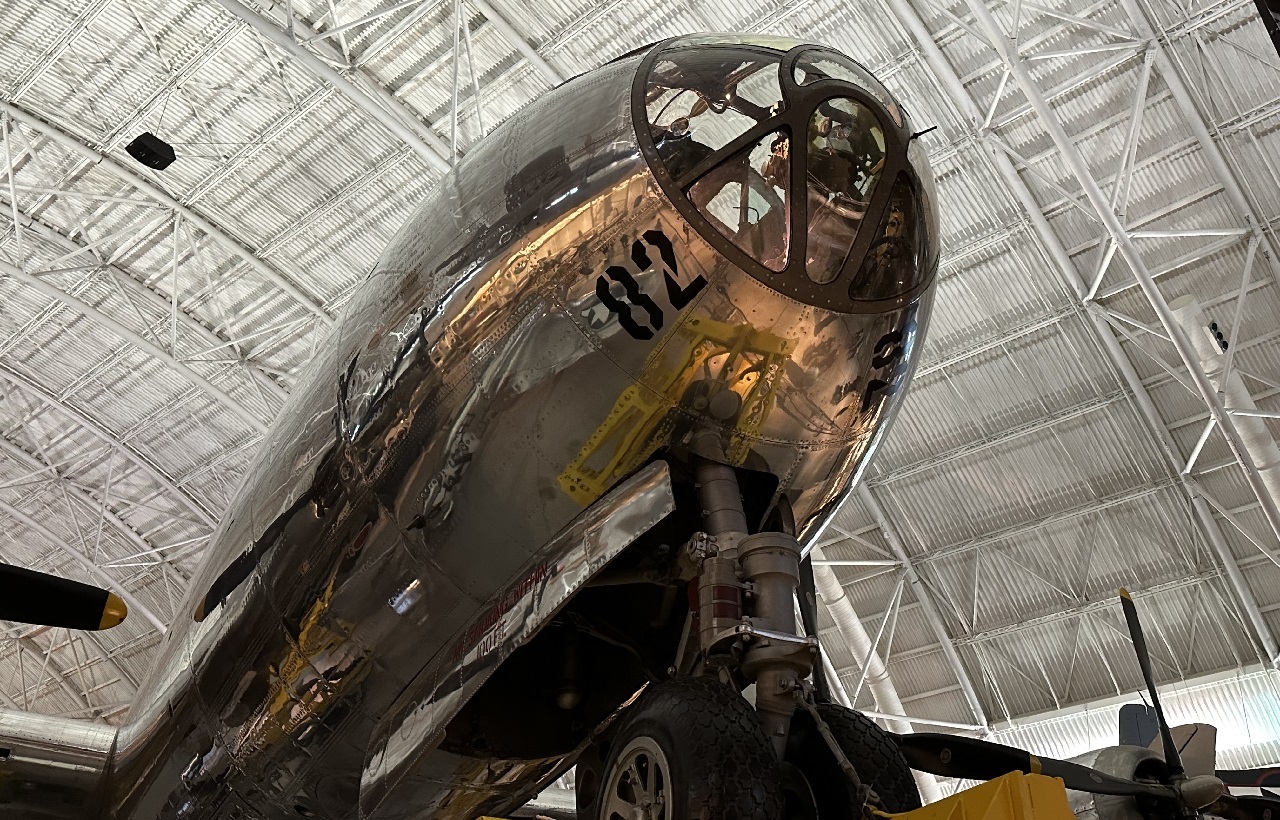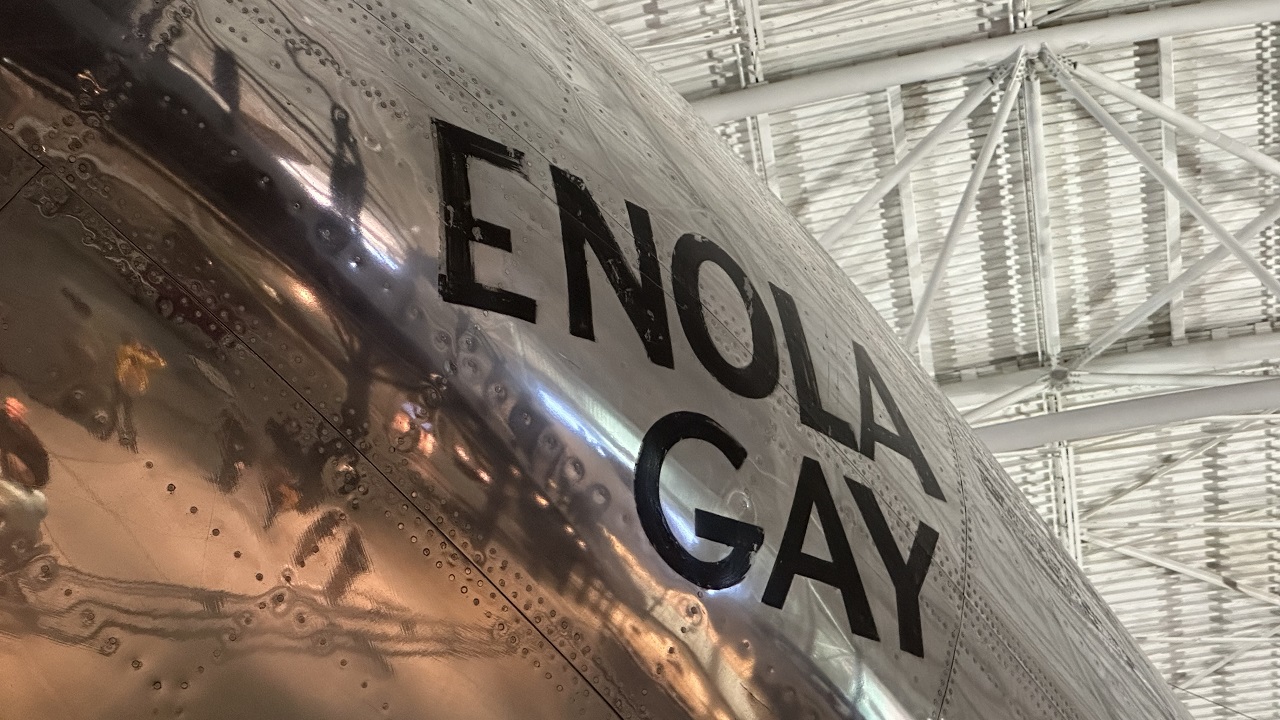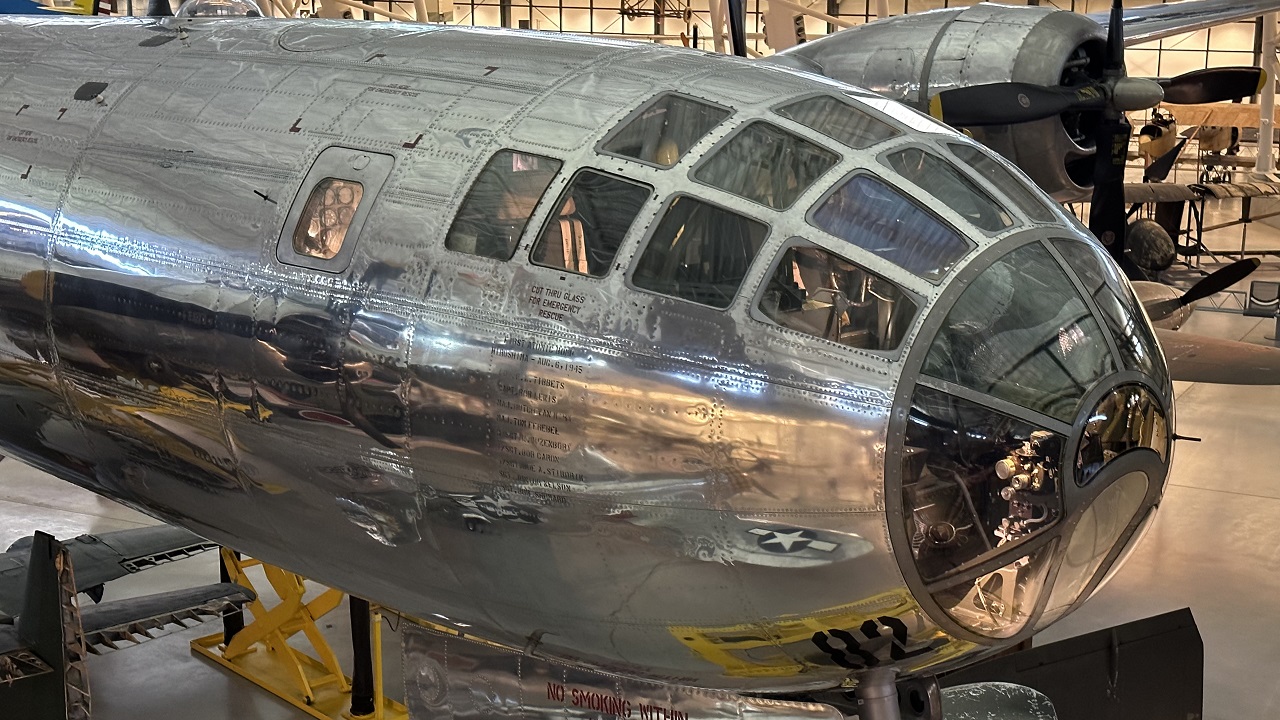Article Summary: The Boeing B-29 Superfortress is one of the most iconic and technologically advanced bombers of World War II. Designed by Boeing and primarily used by the United States during World War II and the Korean War, the B-29 was a game-changer in aerial warfare. As the only bomber to ever carry out a nuclear attack, the ripple effects of the B-29 are still felt to this day. See our video that takes you up close to the B-29 below and original photos.
B-29 Superfortress: America’s Most Trusted Strategic Bomber
The development of the B-29 began in the late 1930s, driven by the United States Army Air Corps’ need for a long-range bomber capable of delivering heavy payloads over vast distances.
The initial design, known as the Boeing Model 334, evolved into the Model 345, which incorporated numerous advanced features.
The B-29’s first flight took place on September 21, 1942, and it was officially introduced into service on May 8, 1944.
One of the B-29’s most significant innovations was its pressurized cabin, which allowed the crew to operate at high altitudes without the need for oxygen masks. This feature was crucial for long-range missions, enabling the aircraft to fly above enemy anti-aircraft fire and fighter planes.
The B-29 also featured a dual-wheeled tricycle landing gear and an analog computer-controlled fire-control system, which allowed one gunner and a fire-control officer to direct four remote machine gun turrets.
A Marvel of Aviation Engineering
The B-29 was a massive aircraft, with a wingspan of 141.2 feet and a length of 99 feet. It was powered by four Wright R-3350-79 or -81 engines, each producing 2,200 horsepower. The aircraft had a maximum takeoff weight of 140,000 pounds and could carry a bomb load of up to 20,000 pounds.
Its maximum speed was 310 knots (575 km/h), and it had a range of 2,600 kilometers (1,616 miles) with a 12,000-pound bomb load.
The B-29’s crew consisted of eleven members, including a pilot, co-pilot, navigator, bombardier, flight engineer, radio operator, and several gunners. The aircraft’s advanced fire-control system allowed for coordinated defense against enemy fighters, making it a formidable opponent in the skies.
The B-29 was a marvel of engineering, incorporating several technological innovations that were ahead of their time. The pressurized cabin, as mentioned earlier, was a significant advancement, allowing the crew to operate comfortably at high altitudes.
The aircraft also featured an advanced fire-control system, which used analog computers to coordinate the operation of its machine gun turrets.
Another notable feature was the B-29’s ability to carry and deploy nuclear weapons, thus making it the first nuclear bomber in history.
This capability was demonstrated during the atomic bombings of Hiroshima and Nagasaki, making the B-29 the only aircraft to have ever dropped nuclear weapons in combat.
The Bomber that Changed the Course of History
The Superfortress played a pivotal role in the United States’ strategic bombing campaign against Japan during WW2. Its ability to fly long distances and carry heavy bomb loads made it ideal for missions over the vast expanse of the Pacific Ocean.
The B-29 was used extensively in firebombing raids on Japanese cities, including the devastating attack on Tokyo in March 19454.
However, the B-29 is perhaps best known for its role in the atomic bombings of Hiroshima and Nagasaki. On August 6, 1945, the B-29 Enola Gay dropped the first atomic bomb on Hiroshima, and three days later, the B-29 Bockscar dropped a second atomic bomb on Nagasaki.
The ripple effects of Hiroshima and Nagasaki not only ended WW2 but also altered the course of human history.
The B-29’s Legacy and Impact
The B-29’s impact on military aviation cannot be overstated. Its advanced design and capabilities set new standards for bombers, influencing the development of future aircraft. The B-29 was the progenitor of a series of Boeing-built bombers, transport, tankers, reconnaissance aircraft, and trainers1. For example, the re-engined B-50 Superfortress became the first aircraft to fly around the world non-stop in 1949.

Enola Gay B-29. Image was taken on October 1, 2022. Image Credit: 19FortyFive.com
The B-29 remained in service in various roles throughout the 1950s, being retired in the early 1960s after 3,970 had been built. A few B-29s were also used as flying television transmitters by the Stratovision company. The Royal Air Force flew the B-29 under the service named Washington from 1950 to 1954. Today, only two B-29s, FIFI and Doc, remain airworthy and are used for airshows and educational purposes.
The B-29s impact is still felt to this day. When it dropped the atomic bombs in Japan not only did it bring the war to an end, but it ushered in a new era of world history. The age of nuclear weapons has brough an age of unprecedented peace, but it also brought the possibility of complete annihilation.

Enola Gay B-29. Image was taken on October 1, 2022. Image Credit: 19FortyFive.com
At the end of the day, the Boeing B-29 Superfortress was a groundbreaking aircraft that revolutionized military aviation. Its advanced design, technological innovations, and significant role in World War II and the Korean War cemented its place in history as one of the most formidable bombers ever built.
About the Author: Isaac Seitz
Isaac Seitz, a 19FortyFive Defense Columnist, graduated from Patrick Henry College’s Strategic Intelligence and National Security program. He has also studied Russian at Middlebury Language Schools and has worked as an intelligence Analyst in the private sector.

